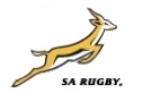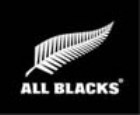
 The 15th of August 1992 was South Africa’s official return to first class international rugby after 11 years –since the 1981 tour to NZ- of rugby isolation. The Springboks did play two “Test matches” against a world XV in 1989 (6 years prior to 1992) and 4 “Test matches” against the NZ Cavaliers in 1986 and of course there was the two Test matches against a 1984 touring English side but these matches were in all fairness not the real thing.
The 15th of August 1992 was South Africa’s official return to first class international rugby after 11 years –since the 1981 tour to NZ- of rugby isolation. The Springboks did play two “Test matches” against a world XV in 1989 (6 years prior to 1992) and 4 “Test matches” against the NZ Cavaliers in 1986 and of course there was the two Test matches against a 1984 touring English side but these matches were in all fairness not the real thing.
Even if one considers these “rugby-lite” Test matches -against the World XV in 1989; the Cavaliers in 1986 and the 1984 English side- a Springboks side had not played together for 6 years when they ran on the field against the All Black on 15 August 1992. It was an unfair contest to put it bluntly and I still feel the irritation that I felt at the time for the arrogance and stupidity of SARU for re-entering the international arena with Test matches against the All Blacks and Australia -a week later- in 1992. You would have thought that SARU could have at least considered a tour to either South America and/or Europe -playing Italy, Scotland and maybe Wales- before taking on the big guns of International rugby.
New Zealand in contrast was extremely well prepared for this match. They started their 1992 season with two Test matches against Ireland -on May 30 and June 6- and then went on a short tour through Australia playing three Test matches as well as tour matches against Western Australia, New South Wales and Queensland before landing in Johannesburg late in October 1992. They then played three tour matches in South Africa against Natal, the Junior Springboks and Free State in August 1992 which they won with relative ease 43-25, 35-14 and 25-10 before lining-up against Naas Botha’s Springboks side on Ellispark. The Junior Springbok side was full of future Springboks and included players like Johan Styger, H. Roberts, Piet Bester, Kobus Wiese, Dirkus Hattingh, R.B Rossouw, Ruben Kruger, Tiaan Strauss, Joost van der Westhuizen, Jannie de Beer, Jacques Olivier, Heinrich Fuls, B.G Fourie, Chris Badenhorst and Gerbrandt Grobler.
Nevertheless the match turned out to be quite an exciting affair with both sides scoring three tries.
Back: Pieter Muller, Ian MacDonald, Adolf Malan, Adri Geldenhuys
Middle: Theo Jansen van Rensburg, James Small, Pieter Hendriks, Robert du Preez, Lood Muller, Johan Styger
Front: Uli Schmidt, Jannie Breedt, John Williams (coach), Naas Botha (captain), Abe Malan (manager), Danie Gerber, Wahl Bartmann
The Springbok and New Zealand sides –as well as the Anthems and haka – played, sung and performed on this historic day can be seen on the video clip below. Danie Gerber –past his best- was a surprise inclusion after Brendan Venter got injured a week before the match.
The Apartheid regime’s Anthem “die Stem” was still the official Anthem –Nkosi Sekela officially became the Anthem in 1994- but there was an expectation if not agreement that Nkosi Sekela would be played before the match. To everyone’s astonishment and to the delight of a large amount of Afrikaners who were waving the old South African flag in the stands “die Stem” came blaring over the sound system. It is interesting to watch the reaction of the South African players as the camera passes over them; some seem a little unsure how to react while others were chest-boastingly pleased with proceedings. This daring –one may say disrespectful- act caused quite a political ruse at the time and the politicians made 100% sure there was no similar slip-up 7 days later when South Africa played Australia at Newlands.
The match started with high kick and charge tactics; both teams obviously not sure what to expect. There was much talk before the match about New Zealand having a secret plan. This secret plan panned out to be to attack the Naas Botha/Robert du Preez channel. Not much came of this secret plan but New Zealand’s first points resulted after a strong break by the NZ No 9 -through that channel- and a “high tackle” by Robert du Preez which culminated in the NZ No 9 needing some recovery time and treatment. Notice in the clip below how the spectators try their utmost to disturb Grant Fox by counting out the steps of his kicking line-up process.
Naas Botha had an opportunity with a relatively easy penalty soon afterwards but missed striking the ball rather poorly indicating that even the experienced players were affected by the 11 years of isolation.
The first try of the match came after 37 minutes after a penalty awarded against one of the South African players close to the Springbok goal line for hitting the ball forward. While the Springboks were arguing with the referee about the penalty Zinzan Brooke took a quick tap and scored. I think the whole of South Africa felt cheated by the sneaky and cheeky manner in which this try was scored. Truth is the players were not aware enough for the faster pace of the International game. They were rusty and not streetwise enough.
The lack of shrewdness and experience in the competitive and challenging environment of International sport was also demonstrated in what followed after this try. South Africa went on the attack but referee desicions, some good defence and gamesmanship by the New Zealanders kept them from scoring. First the referee ruled lifting in the line-out when South Africa forced a line-out on the New Zealand goal line and charged through to score. South Africa maintained the pressure and Danie Gerber came close to scoring but first Robin Brooke and then Zinzan “faked” injuries to break the South African momentum and concentration allowing NZ to ride the tide up to half time with-out leaking a try.
It was in the fifth minute of the second half when Naas Botha slotted a penalty to put South Africa on the scoreboard.
Naas in general had an average day at the office. The occasion after the isolation clearly got to him as well. He missed with two easy penatlies, which in hindsight “could have” won South Africa the match; that is not considering the relative ease with which New Zealand forced penalties and scored tries in this match. South Africa certainly had their changes but was rusty and way too tense due to years of islolation. This penalty came after a great break by Walter Little (who incidently was voted on a rugby talk porgram here in New Zealand this week, as the greatest All Black inside center ever).
Early in the second half John Kirwan ran an excellent line to take the ball from Frank Bunce who made a sniping break after a poor clearance kick by Robert du Preez. This was an excellently worked try after some stupid rugby by South Africa, New Zealand taking a commanding lead in the match.
Late in the second half Danie Gerber scored two tries to make the score line more respectable. This is the first of his two tries.
Poor defence by South Africa and being out of sync with the modern game lead to this try by NZ.
Almost immediately after the first Danie Gerber try, NZ scored again. South Africa had no idea of the importance of dominating the breakdowns or tackle area. Notice how this try resulted from poor tackling and lack of urgency by the South Africans at the tackle area. NZ had at least four runners who took the ball up before they spread it wide and on each of those four instances the ball carriers had no problems crossing the advantage line, either placing the ball or offloading after weak tackles. This try is probably one of the best examples of how the islolation years had impacted on South African rugby. The game moved on and South Africa was way behind the ball game.
See in the clip below how South Africa messed-up two try scoring opportunities after the 3rd NZ try. First, James Small knocked a ball with a clear run to the goal line. Then Naas missed with a drop goal and lastly Pieter Muller made a break but neglected to pass to Theo van Rensburg in the open.
Pieter Muller made up for his mistake by scoring a try -South Africa’s 2nd- with only 5 minutes left on the clock.
South Africa kept on attacking and Danie Gerber scored his 2nd and South Africa’s 3rd try in the dying minutes of this Test to give the Springboks a respectable final score of 27-24.
South Africa did show a lot of patience with this try and did quite a number of things right, like keeping the ball alive, using angled runners, constantly changing the direction and moving the ball through the hands to attack space in stead of trying to barge through opponents like the modern tendency seems to be.
However, it was abundantly clear that South African rugby was off the pace and not on par with how the game developed during the isololation years. The talent was there but the South African players was not streetwise and the South African game in need of some updating.
In the end the final scored flattered South Africa and very few South Africans could disagree with Sean Fitzpatrick when he said in the post match interview that NZ took the foot of the pedal in the last 10 minutes of the match allowing South Africa to score some tries.
New Zealand was clearly the team in control for 70 minutes of this match and those who wanted to disagree quickly changed their tune 7 days later when Australia demolished the Springboks 26-3, scoring three tries to zero at Newlands. If not anything else, these two Test matches demonstrated the impact of 11 years of isolation on South African rugby.
Wonderful stuff, McLook!
Watch out for a mail in about an hour or so…. looks like you followed my advice and acquired a TV Tuner card.